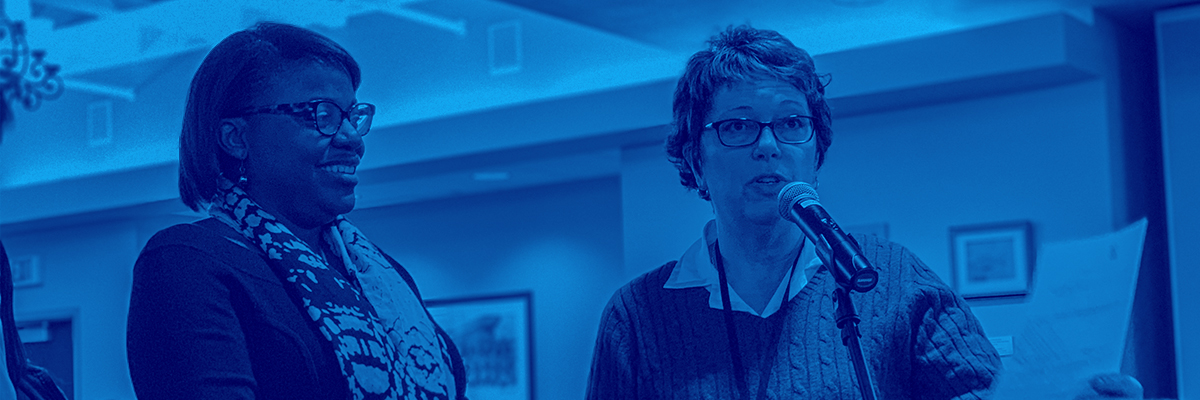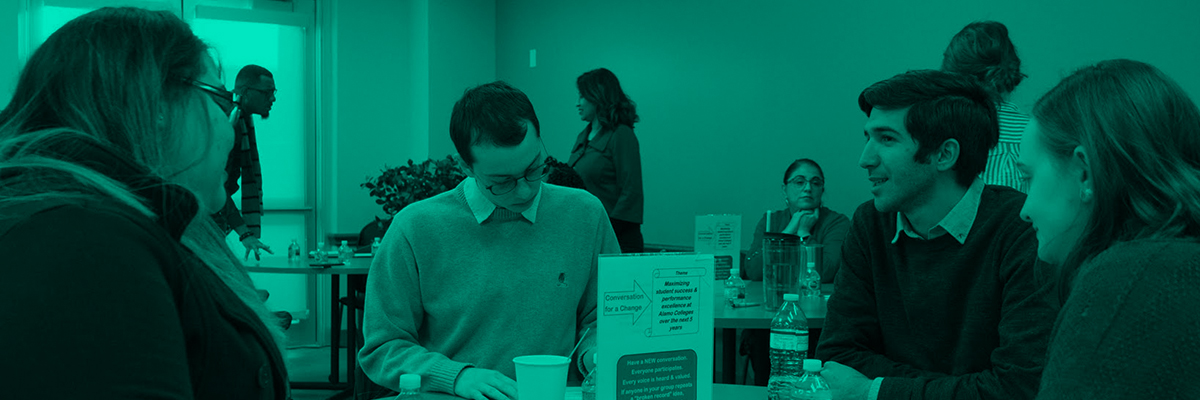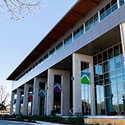Stakeholders’ Strategic Planning Summary

CONVERSATIONS FOR THE FUTURE
In fall 2018 and spring 2019, the Alamo Colleges District Board of Trustees and Dr. Mike Flores, engaged 1,300 employees, students and community members in Conversations for the Future.
Conversations for the Future involved facilitated workshops at each of the colleges and the district support operation office to allow for a shared voice at the table by engaging in helpful dialogue with one another about the future strategic planning of the district. Subsequently, identified conversation topics results were reviewed and prioritized during working sessions at the 2019 ACD stakeholders’ strategic planning retreat. In the first working session, participants further discerned the action focus themes.
The second working session generated prioritized action focus themes. The third working session focused on the determination of big ideas for breakthrough innovation. Data collected from the retreat was reviewed and prioritized by both the District and Tactical Leadership Teams.
The prioritized action themes were used to update the Strategic Objectives and Goals of the Alamo Colleges District Strategic Plan.
|
|
Provide academic and student support and align labor market-based pathways with a focus on student access, completion and social mobility. A. Identify, improve, and fund processes, instructional programs and services designed to promote student success. B. Strengthen the approaches to outreach and onboarding to eliminate barriers to enrollment and accelerate students’ C. Increase performance (retention, engagement, graduation, transfer and job placement) of all students through D. Increase overall student performance by closing performance gaps between ethnic/racial, gender and socioeconomic groups. E. Define, align, assess and improve student learning outcomes/competencies for all academic and workforce programs. |
|
|
Provide opportunities for Alamo Colleges District students and employees to develop as leaders and collaborators. A. Incorporate personal and social responsibility, global citizenship, critical thinking and lifelong learning as the B. Build talent and empower all employees to improve collaboration and teamwork in support of the student success C. Build and foster a robust internal and external communication system with students, employees and the community to |
|
|
Continuously improve our student, employee, financial, technological, physical and other capabilities with a focus on effectiveness, efficiency, agility and quality. A. Utilize the MyMAP framework to improve the overall student experience to accelerate students’ progress toward their B. Improve the overall employee experience to accelerate employees’ level of engagement, satisfaction and performance. C. Ensure sound financial management with emphasis on cost containment. D. Maximize the purchase and use of technology to support student and employee success. E. Develop an agile system of workforce innovation and intelligent risk-taking through a shared contribution to data, action, value and organizational success. |
DISCERNED THEMES

In preparation for the 2019 ACD stakeholders’ strategic planning retreat, data collected from Conversations for the Future was reviewed to identify action focus themes for ACD.
They are listed in priority order based on frequency of mention and categorized as follows:
|
|
||
|
|
||
CONSOLIDATED THEMES

During the 2019 ACD Stakeholders’ Strategic Planning Retreat, participants identified areas of focus from the Conversations for the Future workshops and consolidated them into 17 action focus themes.
They are listed by the three Alamo Way strategic objectives in the following table:
STUDENT SUCCESS
|
PRINCIPLE-CENTERED LEADERSHIP
|
PERFORMANCE EXCELLENCE
|
BIG IDEAS FOR BREAKTHROUGH INNOVATION

During the 2019 ACD stakeholders’ strategic planning retreat, participants discussed innovative ideas for possible implementation by ACD senior leaders. Participants identified the most significant big ideas, provided details about their contribution to solutions, importance and potential impact.
The prioritized big ideas were categorized by the 3 Alamo Way strategic objective as follows:
STUDENT SUCCESS
|
PRINCIPLE-CENTERED LEADERSHIP
|
PERFORMANCE EXCELLENCE
|






